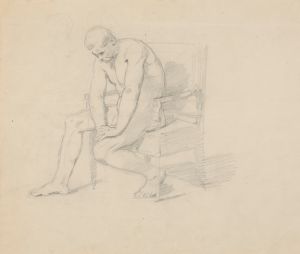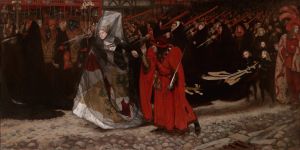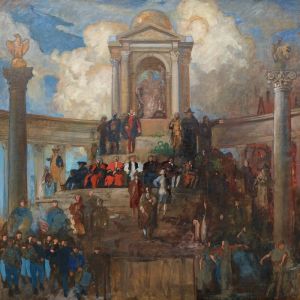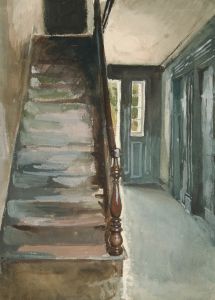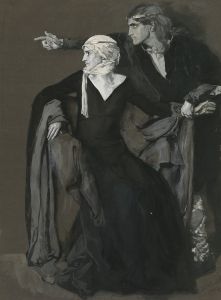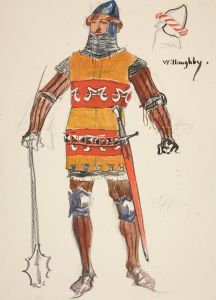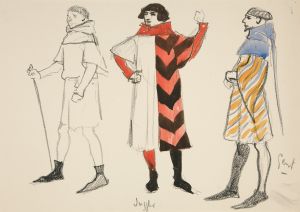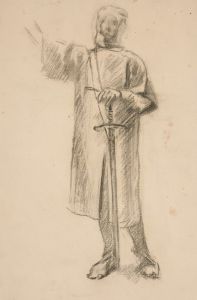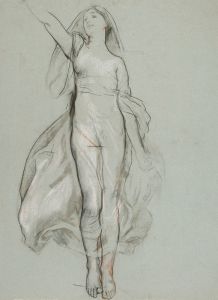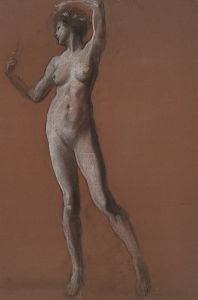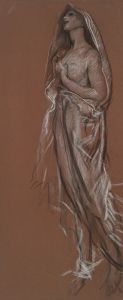
Study for the figure of The Genius of Pennsylvania in ‘The Apotheosis of Pennsylvania,’ mural for the state capitol building in Harrisburg, Pennsylvania, 1902-1911
A hand-painted replica of Edwin Austin Abbey’s masterpiece Study for the figure of The Genius of Pennsylvania in ‘The Apotheosis of Pennsylvania,’ mural for the state capitol building in Harrisburg, Pennsylvania, 1902-1911, meticulously crafted by professional artists to capture the true essence of the original. Each piece is created with museum-quality canvas and rare mineral pigments, carefully painted by experienced artists with delicate brushstrokes and rich, layered colors to perfectly recreate the texture of the original artwork. Unlike machine-printed reproductions, this hand-painted version brings the painting to life, infused with the artist’s emotions and skill in every stroke. Whether for personal collection or home decoration, it instantly elevates the artistic atmosphere of any space.
Edwin Austin Abbey, an American painter and illustrator, created the mural The Apotheosis of Pennsylvania for the Pennsylvania State Capitol in Harrisburg between 1902 and 1911. This monumental work was commissioned as part of a larger effort to decorate the Capitol with art that celebrated the history, culture, and achievements of Pennsylvania. Abbey, known for his historical and literary themes, was tasked with creating a mural that would embody the spirit and legacy of the state.
The Study for the figure of The Genius of Pennsylvania is a preparatory work for one of the central figures in the mural. The Genius of Pennsylvania represents an allegorical figure, embodying the ideals, virtues, and aspirations of the state. Abbey’s studies for the mural were meticulous, as he sought to perfect the composition, symbolism, and execution of the final piece. This particular study showcases Abbey’s attention to detail and his ability to convey a sense of grandeur and meaning through allegorical representation.
The mural itself, The Apotheosis of Pennsylvania, is located in the rotunda of the Pennsylvania State Capitol. It features a complex composition with numerous figures and symbols, illustrating the state’s history, industries, and cultural contributions. The Genius of Pennsylvania is a key figure in the mural, serving as a focal point that ties together the various elements of the artwork. Abbey’s use of allegory and symbolism in this work reflects the broader trends of American mural painting during the late 19th and early 20th centuries, which often sought to inspire civic pride and convey moral or historical lessons.
Edwin Austin Abbey passed away in 1911, the same year the mural was completed. His work on the Capitol murals, including The Apotheosis of Pennsylvania, is considered one of his most significant achievements. The studies and preparatory works he created during this period provide valuable insight into his artistic process and the development of the final mural.
The Study for the figure of The Genius of Pennsylvania is an important example of Abbey’s preparatory work and reflects his dedication to creating a meaningful and impactful piece of public art. It is a testament to his skill as an artist and his ability to translate complex ideas into visual form.





